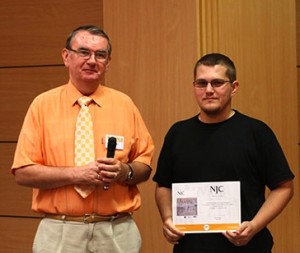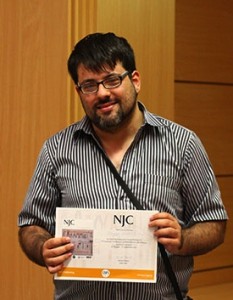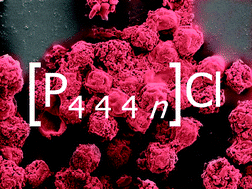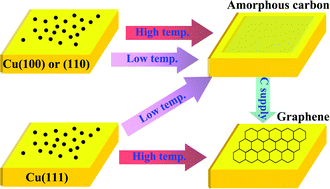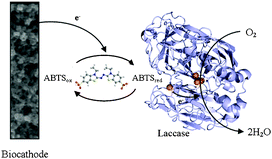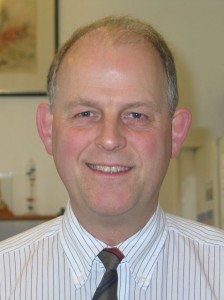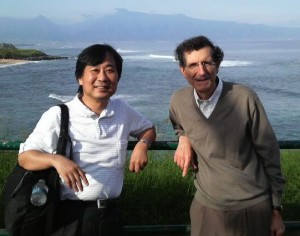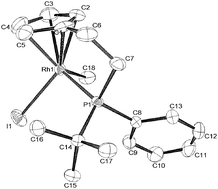Since the October issue of NJC is dedicated to Didier Astruc, we asked some of the contributors to share their souvenirs of Didier with us.
The first group of authors, highlighted in this article, are former collaborators of Didier. In a companion article, we’ll talk with some of his scientific friends.
 Marie-Hélène Delville, a CNRS researcher at the ICMCB in Bordeaux, first met Didier Astruc in Rennes, in June 1981. He proposed that she spend one month in his group. This “short” visit ended with a thesis and a CNRS position in 1985 when the group moved to Bordeaux. Marie-Hélène stayed 11 more years with Didier and then moved on to develop her own research activity on hybrid multifunctional nanoparticles and their applications in biology and energy efficiency.
Marie-Hélène Delville, a CNRS researcher at the ICMCB in Bordeaux, first met Didier Astruc in Rennes, in June 1981. He proposed that she spend one month in his group. This “short” visit ended with a thesis and a CNRS position in 1985 when the group moved to Bordeaux. Marie-Hélène stayed 11 more years with Didier and then moved on to develop her own research activity on hybrid multifunctional nanoparticles and their applications in biology and energy efficiency.
Building on a solid chemistry background from her university studies, Marie-Hélène says that Didier “gave me the opportunity to enter this fabulous world of organometallic chemistry—a hybrid chemistry mixing up organic chemistry and metals at the Angstrom level.”
Her best souvenir of Didier dates from 1989, when both received awards: the German-French Humboldt Award for him and the French CNRS bronze medal for her.
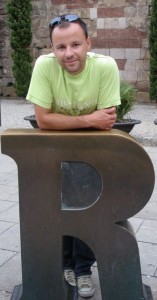
Stéphane Rigaut, currently professor of chemistry at the University of Rennes 1, obtained his Ph.D. thesis under the joint direction of Didier and Marie-Hélène. With them, Stéphane discovered organometallic and physical chemistry, and the perfect association of both. His research activity is now concentrated on multifunctional molecular wires and switches including redox active carbon-rich organometallics.
Stéphane’s most vivid memory of Didier sheds light on the latter’s insight: “During my Ph.D., we observed an unexpected and strange reaction that he immediately connected to a complicated succession of steps including electron transfers and oxygen activations. Further studies showed that he was totally right!”
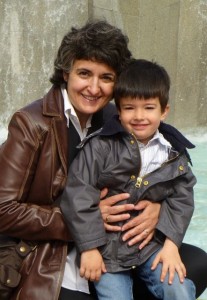
Beatriz Alonso Garrido is an Associate Professor in the Inorganic Chemistry Department of the Autonoma University of Madrid. She spent the year 1999 as a postdoctoral fellow in Didier’s laboratory and they have remained in contact since then, united by their common interest in organometallic redox-active macromolecules (dendrimers and polymers). In particular, Beatriz works on the development of their applications as sensors and biosensors.
Of her experience in Bordeaux, Beatriz notes that she had the opportunity to get a deeper insight into organic and organometallic synthesis as well as in the field of dendrimers. In addition, Beatriz says that “Didier allowed me to grow in two spaces: research and academic interests giving me valuable knowledge in both worlds. I am really grateful to him for placing his trust in me to co-translate his textbook “Chimie Organométallique” from French to Spanish.”
French gastronomy mixes well with chemistry in Beatriz’s interactions with Didier: long talks on chemistry around a table with a good French meal and a nice bottle of Bordeaux.
Our authors briefly comment their contributions to the dedicated issue:
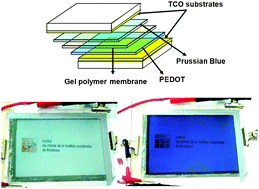
Electrochromic devices based on in situ polymerised EDOT and Prussian Blue: influence of transparent conducting oxide and electrolyte composition—towards up-scaling by Sandrine Duluard, Ayse Celik-Cochet, Iyad Saadeddin, Anne Labouret, Guy Campet, Gerhard Schottner, Uwe Posset and Marie-Helene Delville, New J. Chem., 2011, 35, 2314-2321. DOI: 10.1039/C1NJ20231F
This paper is significant in the sense that it explicitly shows how the combination of polymer chemistry (flexible substrate and conducting layer), inorganic chemistry (indium tin oxide transparent conducting layer) and coordination chemistry (Prussian blue layer) can synergistically work to provide flexible electrochromic devices that can be darkened or lightened electronically. Automatic control of the amount of light and heat that passes through windows is achieved, such that these windows can be used as energy-saving devices.
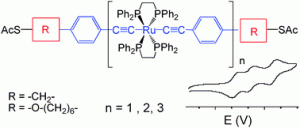
Redox-active ruthenium(II) σ-arylacetylide wires for molecular electronics incorporating insulating chains by Ahmed Benameur, Pierre Brignou, Emmanuel Di Piazza, Yves-Marie Hervault, Lucie Norel and Stéphane Rigaut, New J. Chem., 2011, 35, 2105-2113. DOI: 10.1039/C1NJ20235A
Because molecular wires display properties strongly connected to their structure, carbon-rich metal complexes allowing intramolecular electron transfer with easily accessible redox states are of special interest to understand charge transport through molecular wires on the molecular length in metal—molecule—metal junctions.
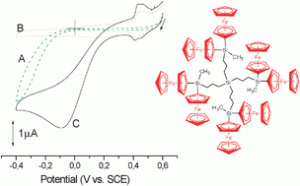
Carbosilane based dendritic cores functionalized with interacting ferrocenyl units: synthesis and electrocatalytical properties by José Losada, Pilar García-Armada, Víctor Robles, Ángel M. Martínez, Carmen M. Casado and Beatriz Alonso, New J. Chem., 2011, 35, 2187-2195. DOI: 10.1039/C1NJ20190E
This contribution describes the synthesis of two carbosilane dendritic cores functionalized with eight electronically communicating ferrocenyl moieties. Platinum electrodes modified with electrodeposited films of these two dendrimers exhibit electrocatalytic activity towards the reduction of oxygen and both oxidation and reduction of hydrogen peroxide.
For the full list of articles comprising this dedicated issue, click here!
